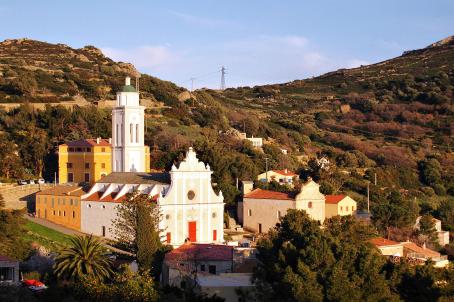Church of the Annunciation

This church is astonishing in its simplicity. Located at the top of the village of Saint'Antonino, it is composed of a relatively simple and refined architecture. However, the interior is quite the opposite. It presents flowers, a multitude of colours. The contrast between the two is striking.
About this building
Extended plan building. Its main façade is rather simple, striated by pilasters, and pierced by the rectangular portal. The second level, actually the roof level, is decorated with a triangular pediment and pierced by an oculus. The bell tower, next to the choir, is on four levels. The second, third and fourth levels are pierced by bays, which reveal stairs or bells depending on the level.




